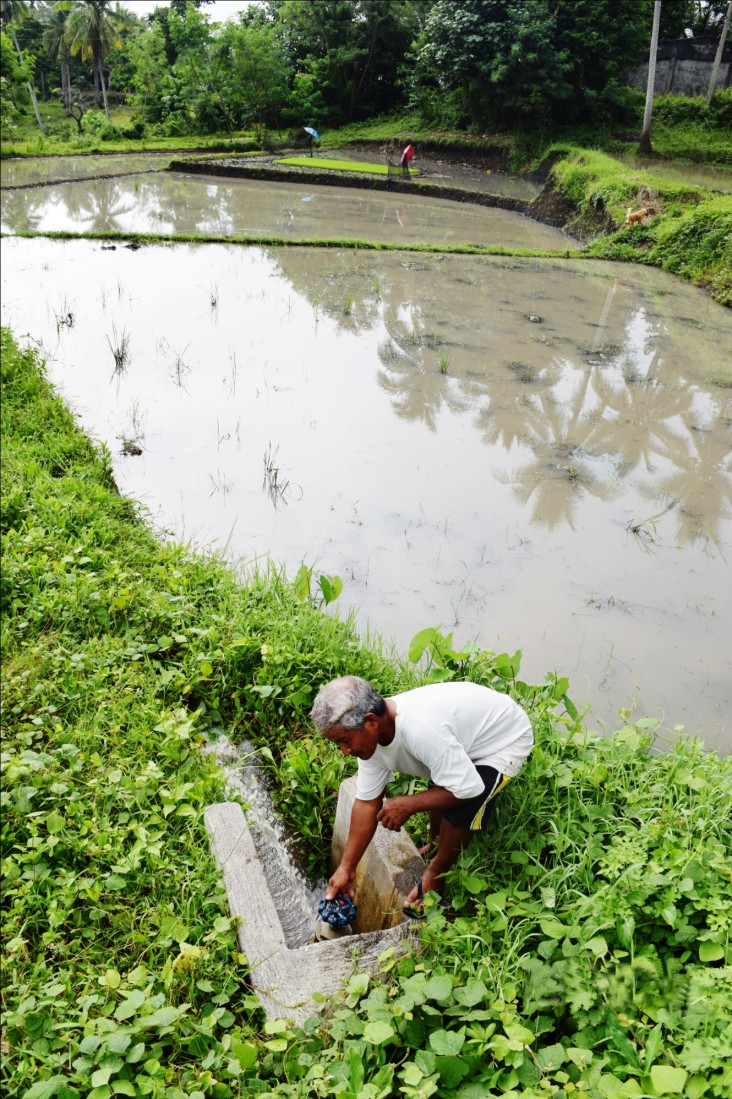
September 2016—Situated on the Philippines’ eastern coast, the Bicol region experiences typhoons, flash floods, strong winds, thunderstorms and droughts. Now occurring more frequently and with greater intensity, these hazards are seriously disrupting lives.
Rice farmers are among the most affected because their crops are vulnerable to extreme weather and changes in rainfall. Too little or too much water can reduce the yield of rice, which is among the country’s primary crops, and a staple food of most Filipinos.
Raquion Ababa is an upland rice farmer in Polangui, Albay of southern Bicol. His farm depends on rainwater for irrigation. The recent El Niño caused drought, harming crops, livelihoods and food supplies.
Ababa, however, was prepared.
In 2013, USAID’s Bicol Agri-Water Project installed a small reservoir in Polangui to help farmers adapt to climate change. The reservoir collected enough water for farmers to plant rice during drought.
Before USAID helped to introduce small irrigation systems in Polangui, no farmer planted rice during the dry season, much less during drought. “I knew it was a risk and other farmers discouraged me to plant,” recalls Ababa.
USAID also helped equip Ababa with information. The project disseminated regular bulletins containing six-month forecasts to guide farmers about local rainfall and temperature, and alert them about extreme weather events. The bulletins also advised when to plant, irrigate and harvest.
Ababa received the bulletin through a weekly local radio program which still airs today, and reaches over 88,000 residents of Polangui and neighboring towns.
“Farmers use weather forecasts to decide when and what to plant,” says Alfredo Mariscotes Jr., the municipal agriculture officer of Polangui. Today, local government partners are adopting these bulletins, signifying their commitment to sustain this decision-support tool.
In April 2016, during the height of El Niño, Ababa harvested seven sacks of rice, each weighing about 50 kilograms, from his half-hectare plot of land. Unlike years past, he was spared from spending money on food. His harvest saved him $230 (10,500 Philippine pesos)—a huge savings given that 13 percent of Filipinos live on less than $2 a day.
Since 2012, the five year, $1.5 million project has established small-scale irrigation systems, like reservoirs for upland farms and shallow tube wells in lowland farms, in demonstration sites in three Bicol municipalities. The project also introduced a Climate Field School, where 600 Bicol farmers learned how to make science-based decisions, such as planting climate-resilient rice varieties.
USAID also helped train 170 local government officials on integrating climate change adaptation into farming and watershed management. All three local government partners have since adopted their own weather bulletins, passed ordinances and allocated budgets to sustain these measures at the local level without the need for further U.S. investment.
Today, Bicol farmers can plant rice during uncertain times, and secure more stable futures for themselves and their communities.
The project is implemented by the University of the Philippines Los Baños Foundation Inc. in partnership with the Philippine Department of Agriculture Regional Field Office of Bicol, with support from the International Research Institute for Climate and Society of Columbia University, and various academic institutions and local governments in the Bicol region.
LINKS
Follow @USAID_Manila, on Facebook, on Flickr, on YouTube







Comment
Make a general inquiry or suggest an improvement.